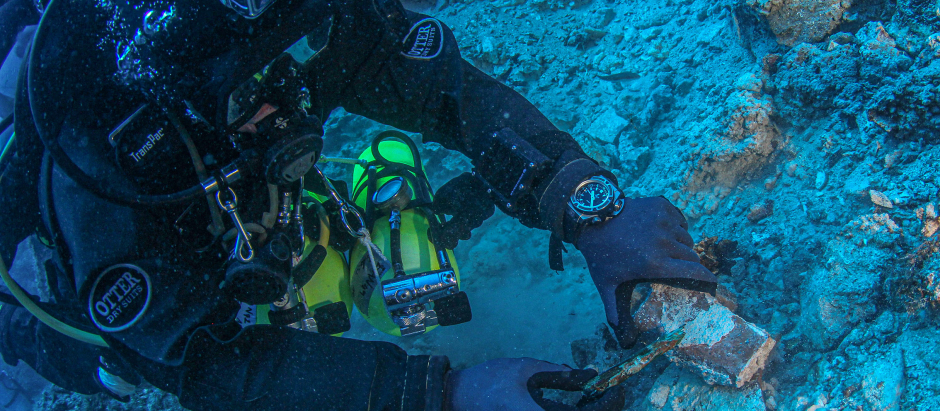A European team of archaeologists and divers have found a large marble head during an underwater archaeological investigation in the famous Antikythera shipwreck in the Aegean Sea, the Greek Ministry of Culture explained in a statement.
Researchers have identified the head as a Farnese-type Hercules and believe it may belong to headless statue 5742 in the National Archaeological Museum of Athens , which was found on the same shipwreck in 1900.
The discovery of the head of the demigod has not been the only surprise, since two human teeth have been found embedded in a solid mass with traces of copper, whose genetic material can be analyzed to determine the gender and characteristics of the person to whom they belonged. They also found numerous objects belonging to the ship, such as bronze, iron, nails and other amorphous masses deformed by water and marine life whose secrets can only be traced through an X-ray.
For this project framed in the Five-Year Plan 2021-2025, in which Greek, Italian and Swiss scientists participated, it was necessary to remove some rocks that prevented work on the site. All the pieces were transported to the facilities of the Ephorate of Underwater Antiquities of Greece for their correct conservation.
The shipwreck of Antikythera
The maritime area south of the Peloponnese has always been an area in which its great storms have caused hundreds of shipwrecks since ancient times, among which the Antikythera shipwreck stands out , the most important discovered to date.
Despite the many statues and other excavated archaeological objects, this wreck is famous for one complex artifact: the Antikythera Mechanism, discovered in the early 1900s by sponge collector divers.
This machine, built in the 1st century BC, is considered the oldest computer in the world due to its complicated gear system capable of predicting eclipses and other astronomical phenomena.
At first it was indecipherable due to the lack of a third of the device’s mechanisms, which were reconstructed by University College London through X-rays and a mathematical method from Ancient Greece.

